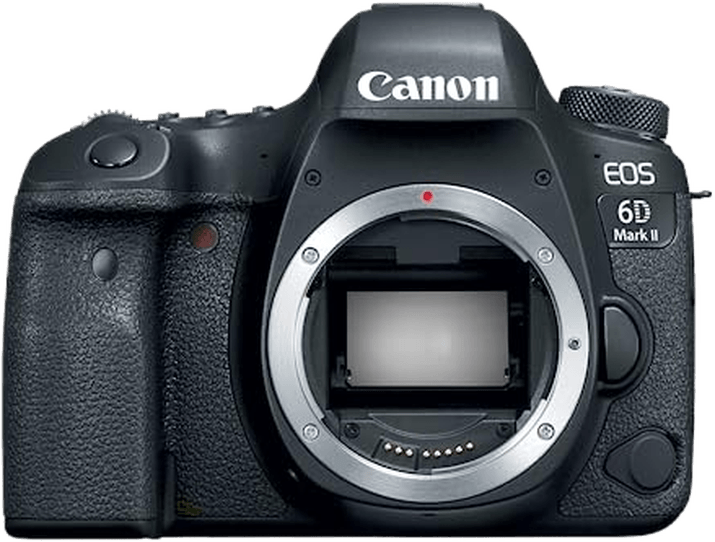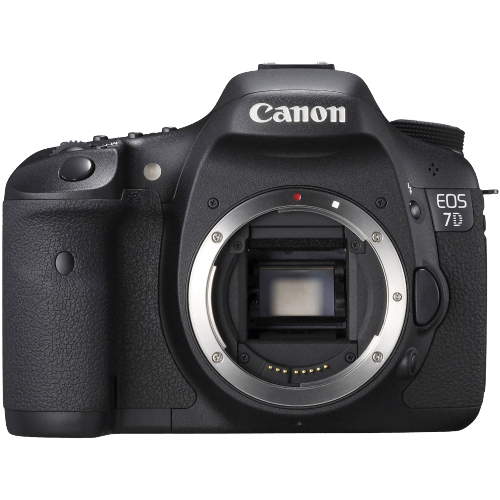Canon EOS 6D Mark II vs EOS 7D Comparison
Canon EOS 6D Mark II

Canon EOS 7D

The Canon EOS 6D Mark II outperforms the Canon EOS 7D with a score of 71/100 compared to 45/100. Both cameras are DSLRs released by Canon, with the 6D Mark II launching in 2017 and the 7D in 2009. They share similar dimensions, but the 6D Mark II is lighter at 453g compared to the 7D’s 860g.
The 6D Mark II’s higher score is due to its improved features, such as a more recent release year and a lighter weight. This makes it a better choice for photographers looking for a more advanced and portable camera. On the other hand, the 7D has a slightly lower launch price, making it a more budget-friendly option.
Taking these points into account, the Canon EOS 6D Mark II is the superior camera, offering better performance and portability. The Canon EOS 7D, however, remains a viable choice for those seeking a more affordable DSLR.
Canon EOS 6D Mark II vs EOS 7D Overview and Optics
The Canon EOS 6D Mark II emerges as the winner in the optics comparison with a score of 69/100, while the Canon EOS 7D scores 43/100. Both cameras share some common specifications, such as the CMOS sensor type, Canon lens mount, and the absence of image stabilisation.
The 6D Mark II is superior in several aspects. It has a higher megapixel count at 26.2, compared to the 7D’s 18 megapixels, providing better image resolution. The 6D Mark II also features a full-frame sensor, offering better image quality and low-light performance than the 7D’s APS-C sensor. Furthermore, the 6D Mark II has a more advanced processor, the Digic 7, which contributes to its higher DXOMARK sensor score of 85, while the 7D’s Dual Digic 4 processor results in a lower score of 66.
On the other hand, the Canon EOS 7D has a faster shooting speed of 8 frames per second, compared to the 6D Mark II’s 6.5 frames per second. This makes the 7D better suited for action photography and capturing fast-moving subjects.
Taking all these factors into consideration, the Canon EOS 6D Mark II is the better camera in terms of optics, offering higher image resolution, superior sensor performance, and an advanced processor. The Canon EOS 7D, while having a faster shooting speed, falls short in other aspects, making the 6D Mark II the clear winner in this comparison.
Canon EOS 6D Mark II vs EOS 7D Video Performance
The Canon EOS 6D Mark II outperforms the Canon EOS 7D in video capabilities, with a score of 57/100 compared to the 7D’s 43/100. Both cameras share some common specifications, such as Full HD video resolution and maximum video dimensions of 1920 x 1080. They also have the same maximum video frame rate of 30fps. However, the differences between the two become apparent when comparing their additional features.
The 6D Mark II has built-in time-lapse functionality, which the 7D lacks. This feature allows users to create time-lapse videos without the need for additional equipment or software, making the 6D Mark II a more versatile option for videographers. This advantage contributes to the higher video score of the 6D Mark II.
On the other hand, the 7D does not have any significant advantages over the 6D Mark II in terms of video capabilities. Both cameras share the same basic video specifications, and the 7D does not offer any additional features that would make it a better choice for video recording.
In comparing the video capabilities of the Canon EOS 6D Mark II and the Canon EOS 7D, the 6D Mark II is the clear winner due to its built-in time-lapse functionality. The 7D, while still a capable camera, does not offer any significant advantages over the 6D Mark II in this area. Therefore, those looking for a camera with superior video capabilities should opt for the Canon EOS 6D Mark II.
Canon EOS 6D Mark II vs EOS 7D Features and Benefits
The Canon EOS 6D Mark II emerges as the winner in the features comparison, with a score of 83/100, while the Canon EOS 7D lags behind at 54/100. Both cameras share some specifications, such as a 3-inch screen size. However, the 6D Mark II outperforms the 7D in several aspects, contributing to its higher score.
The 6D Mark II has a higher screen resolution of 1,040,000 dots, compared to the 7D’s 920,000 dots. This results in sharper and clearer image previews. Additionally, the 6D Mark II is equipped with a touchscreen, making it more user-friendly and efficient in navigating through settings and menus. The 7D, on the other hand, lacks this feature.
Another advantage of the 6D Mark II is its flip screen, which provides flexibility in shooting from various angles. This is particularly useful for capturing images in challenging positions. The 7D does not offer this functionality. Furthermore, the 6D Mark II is superior in terms of connectivity, as it has GPS, Wi-Fi, and Bluetooth capabilities. These features allow for easy geotagging, remote shooting, and image sharing. The 7D does not have these connectivity options.
Despite its lower score, the 7D might still be a suitable choice for some users, depending on their specific needs and preferences. However, based on the features comparison, the 6D Mark II proves to be the better camera, offering higher screen resolution, touchscreen, flip screen, and advanced connectivity options. Ultimately, the choice between these two cameras comes down to individual requirements and priorities.
Canon EOS 6D Mark II vs EOS 7D Storage and Battery
The Canon EOS 6D Mark II outperforms the Canon EOS 7D in storage and battery, scoring 45/100 compared to the 7D’s 35/100. Both cameras share some similarities, including having only one memory card slot and lacking USB charging capabilities.
The 6D Mark II’s superiority lies in its longer battery life, capable of capturing 1200 shots per charge, and utilizing the more versatile SD, SDHC, and SDXC memory cards, which are UHS-I compatible. In contrast, the 7D has a shorter battery life of 800 shots and uses Compact Flash, UDMA, or Microdrive memory cards.
The 7D does not have any notable advantages over the 6D Mark II in terms of storage and battery, making the 6D Mark II the clear winner in this category. Thus, the Canon EOS 6D Mark II is the better choice for photographers who prioritize battery life and storage versatility.
Canon EOS 6D Mark II vs EOS 7D – Our Verdict
Are you still undecided about which camera is right for you? Have a look at these popular comparisons that feature the Canon EOS 6D Mark II or the Canon EOS 7D:
